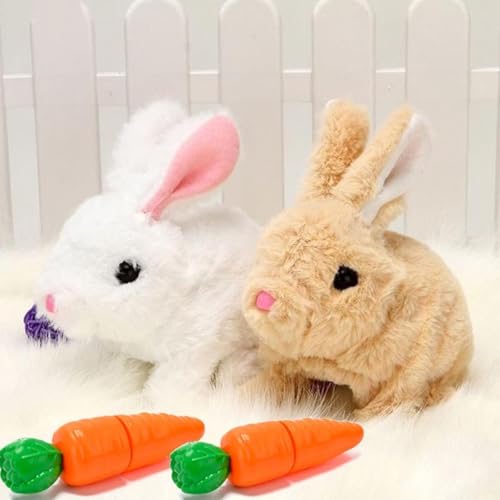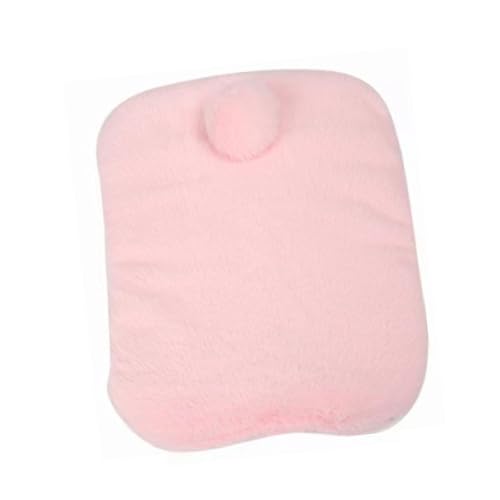wtg FunBun congrats , sorry the rest of thelitter didnt make it , how may totaldid she kindle ?
You are using an out of date browser. It may not display this or other websites correctly.
You should upgrade or use an alternative browser.
You should upgrade or use an alternative browser.
errrrgh she is soooo uncomfortable!
- Thread starter funbunbun
- Start date

Help Support Rabbits Online Forum:
This site may earn a commission from merchant affiliate
links, including eBay, Amazon, and others.
lyndsy
Well-Known Member
YAY!  Babies!!!!!!!
Babies!!!!!!!
Can't wait to see the pics!
Monkeys!
Can't wait to see the pics!
Monkeys!
funbunbun
Well-Known Member
ok three babies total only two lived here are the two in the nest
AWWWWWWWW!!! so tiny and so cute .
funbunbun
Well-Known Member
here is baby A
funbunbun
Well-Known Member
baby B what color do you think this baby will be?

$15.60 ($0.03 / Count)
$22.29 ($0.04 / Count)
American Health Original Papaya Digestive Enzyme Chewable Tablets - Promotes Nutrient Absorption and Helps Digestion - 600 Count (200 Total Servings)
Amazon.com

$8.37 ($0.14 / Count)
$8.99 ($0.15 / Count)
vH essentials Probiotics with Prebiotics and Cranberry Feminine Health Supplement - 60 Capsules
Amazon.com

$24.48 ($0.24 / Count)
Urinary Support by Sherwood Pet Health (100 Tablets - 60 Grams)
Sherwood Forest Natural Rabbit Foods

$5.49 ($14.64 / lb)
Vitakraft Rabbit Popped Grains & Honey Treat Sticks 2 Pack, 3.0 Ounce
Amazon.com

$38.50 ($0.53 / Ounce)
Peter Rabbit Organics Fruit Flavors Variety Pack 4 oz. Squeezable Pouches (Pack of 18)
Amazon.com

$14.95 ($0.12 / Ounce)
$16.99 ($0.13 / Ounce)
Kaytee Premium Potty Training Critter Litter for Pet Ferrets, Rabbits & Other Small Animals, 8 lb
Amazon.com

$3.99 ($31.92 / lb)
Wild Harvest Food And Unique Edible Treats for Guinea Pigs, Hamsters, Gerbils, and Adult Rabbits
Amazon.com

$8.71 ($0.73 / Ounce)
$9.99 ($0.83 / Ounce)
Brer Rabbit Unsulphured Molasses, Mild Flavor, 12 Ounce
JF Distributions

$13.36 ($53.44 / Ounce)
Flower Essence Services Supplement Dropper, Rabbit Brush, 0.25 Ounce
I Buy Direct

$36.36 ($0.91 / Ounce)
Pumpkin Tree Peter Rabbit Organics Super Oats & Seeds, Puree Squeeze Pouch, Banana & Mango, 4 Ounce (Pack of 10)
Amazon.com

$10.99
$12.00
KIDS PREFERRED Peter Rabbit Soft Book with toy, Teether and Crinkle, 5 Inches
Amazon.com

$9.99 ($42.62 / lb)
CARU - Soft 'n Tasty Baked Bites - Rabbit Bites Dog Treats - Flavorful Training Treats - 3.75 oz
Amazon.com

$7.99 ($0.36 / Count)
$9.98 ($0.45 / Count)
Annie's Organic Berry Patch Bunny Fruit Flavored Snacks, Gluten Free, Value Pack, 22 Pouches, 15.4 oz
Jxsh Store

$29.46
$45.00
GUND Baby Flora The Bunny Animated Plush, Singing Stuffed Animal Toy for Ages 0 and Up, Cream, 12" (Styles May Vary)
Amazon.com
funbunbun
Well-Known Member
this is the one who didn't make it itlooked weird to begin with and it was huge comparedto the others? who knows
funbunbun
Well-Known Member
this is a closer view of baby B all dried off any ideas on color?? castor maybe??
Pam is the expert hereon color im sure she will bein soon and let youknow ,
The babies are socute , it will be funto see them grow up thru pictures.
The babies are socute , it will be funto see them grow up thru pictures.
Pet_Bunny
Well-Known Member
gypsy wrote:
Rainbows!
It will be interesting to compare the pictures of the babies to the pictures of the mother and father (Gypsy and Ace).The babies areso cute , it willbe fun to see them growup thru pictures.
Rainbows!
Bramble Briar86
Well-Known Member
What adorable babies!!!!!!
Ellie:dude:
Ellie:dude:
erin
Well-Known Member
lizabeth332
Well-Known Member
congrats!
what color was the sire? these are mini rex? baby B is not acastor for two reasons: 1. castors have white bellies, and 2.castors/chestnuts (same color) are born black and by 4-6 days they lookchestnut, the heads turning color first. he looks more like asable to me.
ok, looking back she was bred to a chocolate dutch? thensable is "possible" tho unlikey, since sable is not recognized ineither breed, well actually seal is recognized in MR, so if your doewas out of a seal then she could throw a sable IF the buck carried rewor himie, which for a pure dutch would be really weird! (if he carriedsable then it would turn out to be a seal) (btw it cant be acastor since castor is agouti and both parents are self) HEY WAIT AMINUTE!!!! in a litter of 3 you didn't get ANY dutchmarked???????
Pam, correct me if i'm wrong, but for a purebred dutch markedcorrectly the gene is dudu , right, so if it was bred to a DuDu itwould throw all Dudu's Right???and aren't Dudu's partialdutch pattern? or a screwed up one? SO IF IN A LITTER OF 3,NONE had a dutch pattern at all, is it Possible that the dutch buck WASACTUALLY THE FATHER OF THE LITTER?? and if he wasn't, that'dexplain the chl problem too...
don't get excited everyone, i could be all wrong, but funbunbun, are you SURE that the sire was actually your dutch???:shock:
what color was the sire? these are mini rex? baby B is not acastor for two reasons: 1. castors have white bellies, and 2.castors/chestnuts (same color) are born black and by 4-6 days they lookchestnut, the heads turning color first. he looks more like asable to me.
ok, looking back she was bred to a chocolate dutch? thensable is "possible" tho unlikey, since sable is not recognized ineither breed, well actually seal is recognized in MR, so if your doewas out of a seal then she could throw a sable IF the buck carried rewor himie, which for a pure dutch would be really weird! (if he carriedsable then it would turn out to be a seal) (btw it cant be acastor since castor is agouti and both parents are self) HEY WAIT AMINUTE!!!! in a litter of 3 you didn't get ANY dutchmarked???????
Pam, correct me if i'm wrong, but for a purebred dutch markedcorrectly the gene is dudu , right, so if it was bred to a DuDu itwould throw all Dudu's Right???and aren't Dudu's partialdutch pattern? or a screwed up one? SO IF IN A LITTER OF 3,NONE had a dutch pattern at all, is it Possible that the dutch buck WASACTUALLY THE FATHER OF THE LITTER?? and if he wasn't, that'dexplain the chl problem too...
don't get excited everyone, i could be all wrong, but funbunbun, are you SURE that the sire was actually your dutch???:shock:
RusselandRoxy
Well-Known Member
CONGRATULATIONS!!! THEY ARE SOO CUTE! I HAD ASIMILAR THING HAPPEN WITH MY LITTER - 3 SURVIVED BUT THE ONETHATDIDNT MAKE IT WAS HUGE AND ODD LOOKING - JUST LIKE YOURS- STRANGE ISN'T IT?
hOPE ALL GOES WELL,
LEANNE
hOPE ALL GOES WELL,
LEANNE
ariel
Well-Known Member
WOW New Babies!!! Congratulations!!
lizabeth332
Well-Known Member
bump... I'd really like pam to see this!
SunnieBunnie Rabbitry
Well-Known Member
lizabeth332 wrote:
Since I noticed that Momma was a broken...
I thought thisClip may help better explain
From:http://members.tripod.com/Rexrabbit/brokengene.html
~Sunshine
I went back and took a closer look at the pictures above...Funbunbun, am I correct if I say the toes on the front feet of the darkbaby look white (er, pink)? That in itself could be the Dutchmarkings you were looking for Liz, and obviously you wouldn't be ableto see any "dutch marking" difference on the broken baby.
As for the one that didn't make it - it was hard to tell fromthe picture if it was all white or if it was spotted or marked.
...Pam, correct me if i'm wrong, but for apurebred dutch marked correctly the gene is dudu , right, so if it wasbred to a DuDu it would throw all Dudu's Right???and aren'tDudu's partial dutch pattern? or a screwed up one? SO IF IN ALITTER OF 3, NONE had a dutch pattern at all, is it Possible that thedutch buck WAS ACTUALLY THE FATHER OF THE LITTER?? and if hewasn't, that'd explain the chl problem too...
don't get excited everyone, i could be all wrong, but funbunbun, are you SURE that the sire was actually your dutch???:shock:
Since I noticed that Momma was a broken...
I thought thisClip may help better explain
From:http://members.tripod.com/Rexrabbit/brokengene.html
The Dutch gene is a tricky little thorn in our side. Ithas been found that the Dutch gene lives very close to the Broken geneon the chromosome. In fact, they live so close together they areconsidered "linked" genes. Since we do not breed for the Dutch markingswe tend to forget this gene plays a role in our stock. The Dutch geneoperates much like the strange chinchilla series. You can get varyingdegrees of Dutch spotting depending on the mixture of each gene withanother in the list. The good looking Dutch you see on the table are amixture of dud duw. A Dutch with too much white will often be duwduw.While dud dud, Du dud, and Du duw can be an almost solid rabbit with awhite spot or two. Does this last description sound familiar? Yes, it'sthat annoying bunny that looks like a wonderful solid before you noticethe white toe,white toenail or stray white spot on the body. Now keepin mind that most of our rabbits carry a Du Du dominant gene pair thatprevents those spots. But if a Broken inherits one of these pesky Dutchrecessives would we know it? The answer is no! Your Broken mayhave a slightly lighter pattern, but how do you know what is causingit. Modifier "helper" genes also control the size of colored areas andthe shape of the pattern. Therefore, the Broken is capable of hidingand carrying this annoyance around. This does not mean allBrokens carry the recessive Dutch genes. Many of ourBrokens produce fine solids without a problem, but the variety as awhole always has the ability to surprise us.
~Sunshine
I went back and took a closer look at the pictures above...Funbunbun, am I correct if I say the toes on the front feet of the darkbaby look white (er, pink)? That in itself could be the Dutchmarkings you were looking for Liz, and obviously you wouldn't be ableto see any "dutch marking" difference on the broken baby.
As for the one that didn't make it - it was hard to tell fromthe picture if it was all white or if it was spotted or marked.
funbunbun
Well-Known Member
the father was a blue dutch and you guys know the mother
the baby that didn't make it was a blue broken
the baby that didn't make it was a blue broken
lyndsy
Well-Known Member
Congrats!
YAY! BABIES!!!!!
I love the pics, thanks!
Monkeys!
YAY! BABIES!!!!!
I love the pics, thanks!
Monkeys!
KatsMeowTree
Well-Known Member
Hello,
I just thought it was funny that I also have a rabbit named Gypsy. Onlyshe is a Red New Zealand and very very spoiled. She's about 6 monthsold and already 9 pounds, actually pretty good finally. Well, good luckwith the babies and all.
Kat
I just thought it was funny that I also have a rabbit named Gypsy. Onlyshe is a Red New Zealand and very very spoiled. She's about 6 monthsold and already 9 pounds, actually pretty good finally. Well, good luckwith the babies and all.
Kat























































